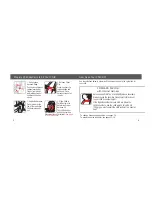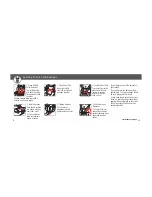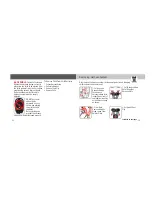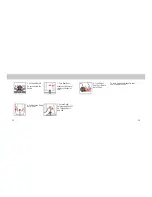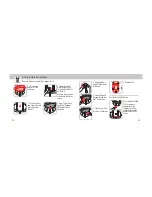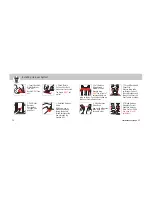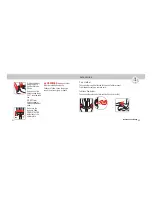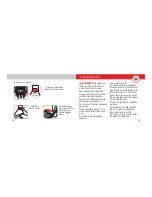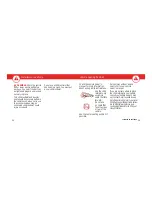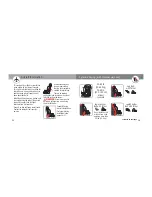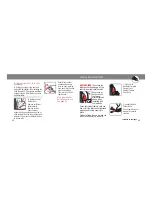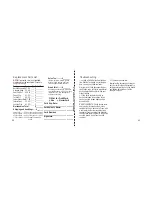
31
32
continued on next page
3.
Check the
Retractor
Retractors pull seat
belts into stored
positions and lock
the belt to hold pas-
sengers in place.
A retractor is most likely how you will be
locking a child restraint into place.
See the following “Types of Retractors”
section for some common types of
vehicle belt retractors that will work with
this child restraint.
Switchable Retractor
(most vehicles have this type)
This retractor can be switched to a lock-
ing mode. You
MUST
have the retractor in
the locking mode to use the seat belt with
this child restraint.
Switching to locking mode:
Slowly pull
the shoulder belt all the way out, then let
it go back in an inch or two.
As it goes back in, you will most likely
hear a ratcheting sound.
Gently pull the belt to see if it has locked.
You will not be able to pull any more belt
out if the lock has engaged.
Types of Retractors
Knowing Your Vehicle Belts
1.
You MUST Review
Your Vehicle Owner’s
Manual
Your vehicle owner’s
manual will let you
know what vehicle
belts and seating positions child restraints
can be installed in.
2.
Determine How
the Child Restraint
Will Be Locked Into
Place
The vehicle belt MUST
NOT loosen after
tightening.
This means there needs to be a way to
lock the vehicle belt.
The ways this can be done are:
• By using the seat belt’s retractor; or
• By using the seat belt’s latch plate.
Not all vehicle belts and seating positions will work with child
restraints. Please follow the following steps to understand how to lock
a child restraint with a vehicle belt.


